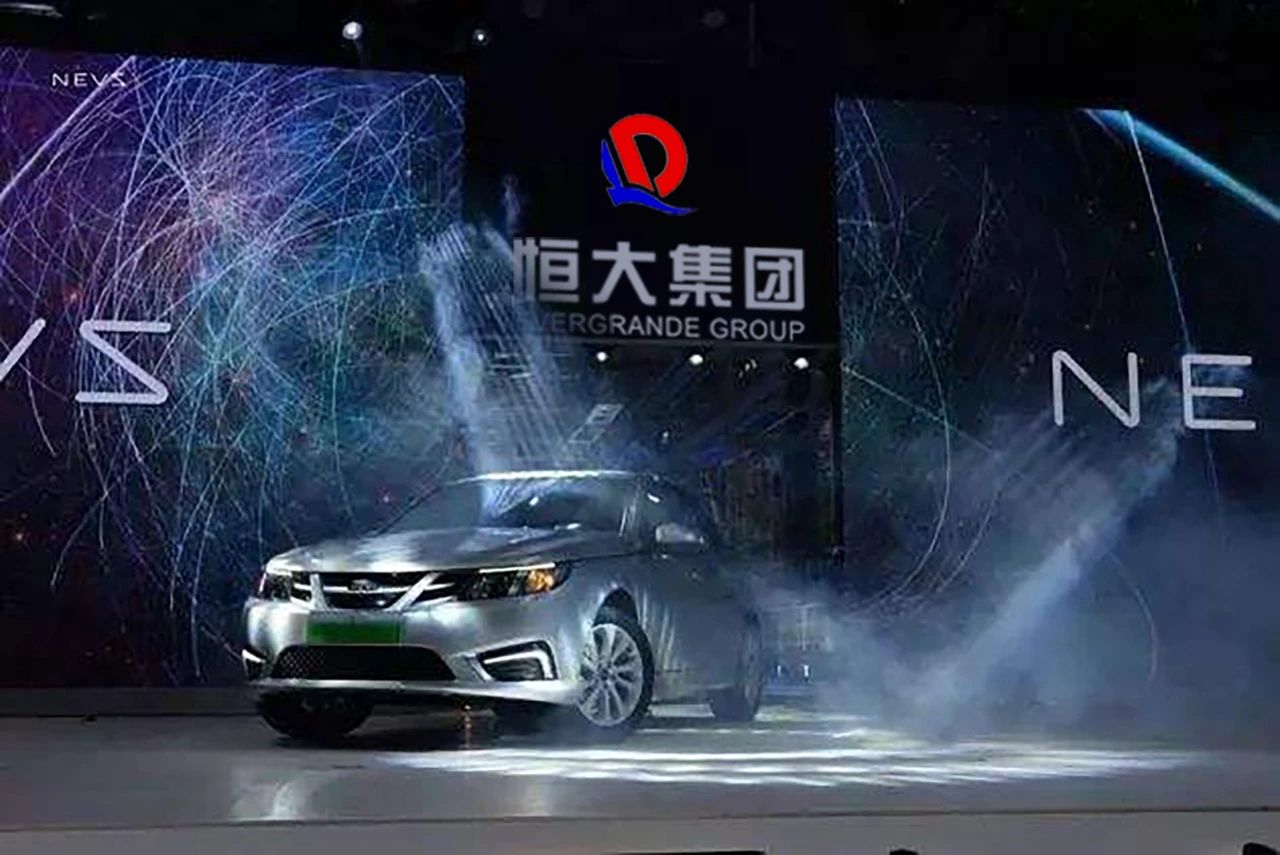Announcement: Evergrande’s New Energy and Property Businesses Partially for Sale, Awaiting Further Disclosure
A recent announcement from Evergrande Group has once again made its car manufacturing business a hot topic. The announcement stated that the company is “in contact with independent third-party investors to explore the sale of part of the equity of Evergrande New Energy Auto Group and Evergrande Property Services Group”. However, specific plans and agreements are still to be disclosed.
On the eve of the announcement, rumors circulated in the market that “under the coordination of relevant departments, a number of powerful state-owned enterprises and private enterprises may take over the corresponding assets of Evergrande to help it overcome short-term liquidity difficulties”.
This announcement has both positive and negative reactions from the public. Stock prices for China Evergrande, Evergrande Auto, and Evergrande Property all rose. However, there are also negative reactions in public opinion, with doubts once again arising about Evergrande’s survival and the fate of its car manufacturing business.
People have been questioning and doubting Evergrande’s car manufacturing business, especially regarding its slogan of “buy buy buy, merge merge merge, circle circle circle, big big big, good good good” conflicting with the universal rules of car manufacturing.
Negative news such as “employees selling houses part-time”, “building factories as an excuse to grab land”, and “new cars at auto shows turning out to be empty shells” have also raised questions.
Evergrande clarified that this proposed asset sale is only partial, not a complete liquidation of the business, in an attempt to dispel doubts about the future of its car manufacturing business.
Looking back at the complicated information regarding Evergrande’s car manufacturing business, amidst the exclamations of “really rich”, “hard to understand”, “another PPT car manufacturer?”, “using car manufacturing to grab land?”, and other comments, it can only be said that this “barbarian entering the industry of new energy cars” drama is far from over.
Power Struggle Surrounding FF
For every Chinese resident, the most heavily increasing consumer commodity in the first two decades of the 21st century was houses. The soaring housing prices have made buying a house one of the ultimate goals for every hard-working person, and have also created wealth myths for real estate giants such as Wanda, Evergrande, and Vanke, making people naturally associate these names with the phrase “having money”.
However, as it is well known, in the face of the national will of “houses are for living, not for speculation”, the golden age of real estate has gone and will not return. Real estate giants with rich capital naturally extend their view from simply selling houses to broader fields.The one who takes fast steps is indeed Evergrande. As early as 2016, Evergrande officially announced that it would change the company name from “Evergrande Real Estate Group Limited” to “China Evergrande Group”.
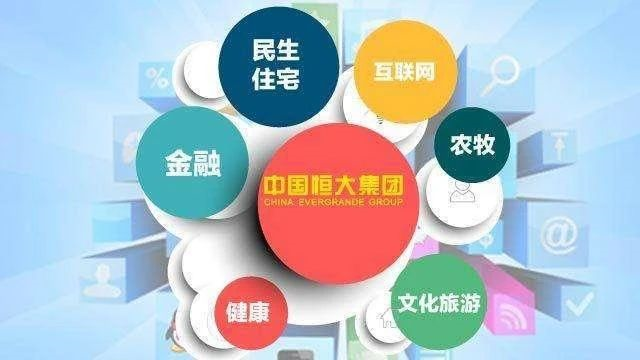
As for the reason for the renaming, Evergrande claims that it is because their business has become more diverse, covering not only real estate development, but also finance, internet, health, cultural tourism and other fields.
Even with diversified business, the bottom line of this real estate giant remains unchanged. In the era of soaring housing prices, the secret to the developers’ success lies in speed and scale: by using financial instruments such as bank mortgage loans, they can quickly obtain land and build houses, and expand rapidly. Even if debt piles up, it is not a problem in the face of soaring housing prices.
The leader in this model is also Evergrande. In the past 20 years of development, Evergrande’s expansion in other areas has been condensed into three keywords: spending money, speed, and scale.
This way of thinking allows Evergrande to create waves in every new industry they enter, while leaving behind a series of controversial names such as Evergrande Spring and Evergrande FinTech.
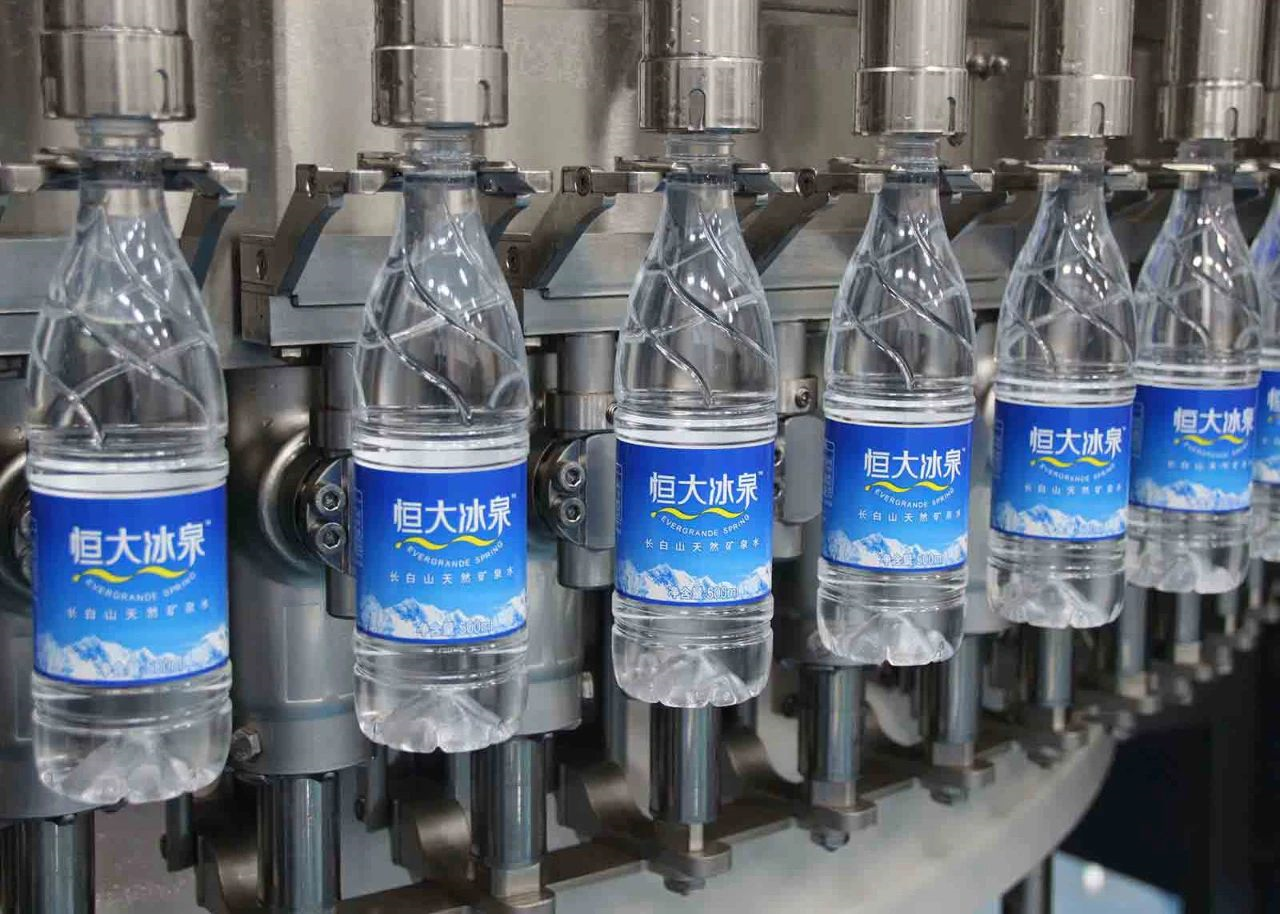
For real estate giants who are expanding into other industries, a special nickname has emerged in public opinion: “the barbarians at the gate.”
However, compared with heavy assets like real estate, the consumer goods, internet, entertainment, finance, and other industries appear to be “light”. Which industry requires heavy investment and high scale, allowing developers to manage their capital more quickly than real estate?
The answer is obviously the automobile industry.
In fact, in addition to Evergrande, other real estate developers such as Baoneng and China Fortune Land Development have also set their sights on the automobile industry, but their efforts to enter the industry have not been as successful as Evergrande’s.
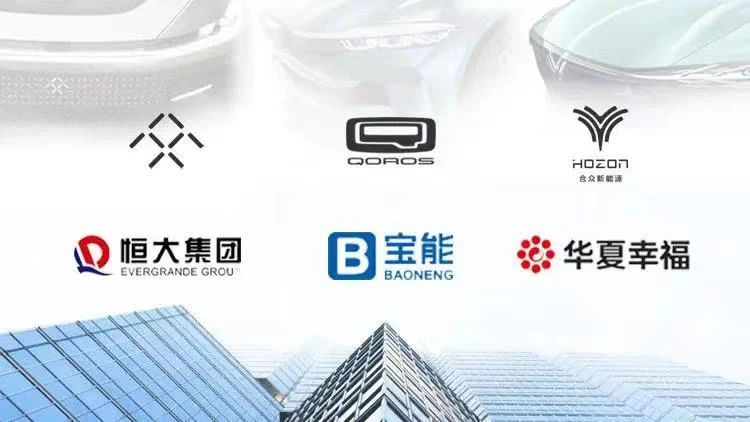
Before diving into the car manufacturing industry themselves, Evergrande initially had the same idea as other companies – to invest in a vehicle manufacturer and quickly enter the industry.
However, compared to marginal companies like Qoros and Weltmeister (Ji), this enterprise seems to be more trendy – Jia Yueting’s Faraday Future (FF for short).
Perhaps it is because Jia Yueting’s grand “LeEco ecosystem” resembles the real estate business model, that he has always been favored by real estate giants. Even before Evergrande’s investment, when LeEco was hit by a cash crunch in early 2017, it also received a bailout of billions of dollars from Sun Hongbin, another real estate tycoon.In just one year, the more than 15 billion yuan of investment from Sunac went down the drain, while LeEco, burdened by heavy debt, still had no recovery in sight. Sun Hongbin left the company in disappointment.

For the struggling Jia Yueting, it was Evergrande that came to the rescue, but Evergrande was not interested in the broad LeEco ecosystem, but rather in Jia’s core business of Faraday Future (FF) cars.
However, their partnership did not result in the production of any cars, but rather in a dramatic dispute over control of FF.
On November 30, 2017, Evergrande subsidiary, Season Smart, signed a merger and subscription agreement with FF. The two parties agreed that over three years, Evergrande would invest $2 billion and obtain a 45% stake in the joint venture company, Smart King. To accomplish this, Evergrande needed to pay $800 million by the end of 2018, $600 million in 2019, and $600 million in 2020.
On May 25, 2018, Evergrande paid the first $800 million in investment ahead of schedule. According to Jia’s internal speech, more than $400 million went to the production of the FF 91 and subsequent models, more than $100 million went to pay suppliers’ upfront costs, and more than $200 million went to FF’s Chinese business, the Nansha land development project and construction.
After investing in FF, Xu Jiayin personally visited the FF headquarters in Los Angeles and experienced the FF 91 model. He then said, “seeing is believing” and praised, “FF is in a leading position in the world, and it is absolutely correct to invest in it. Evergrande will provide comprehensive support in terms of funding, production site construction, and product sales.”

However, the $800 million was quickly spent in just two months, and their honeymoon period came to an end.
In July 2018, FF claimed that the $800 million had been almost entirely used up and asked Evergrande to pay $700 million ahead of schedule. The two parties signed a supplementary agreement which stipulated that Evergrande shall enter the FF management team, obtain the Chinese legal representative and chairman of FF, and Jia shall resign from the FF global board of directors. Evergrande shall complete the follow-up funding within that year.
However, the supplementary agreement failed to fulfill the final injection of funds from Evergrande into FF.
Jia realized later that Evergrande was trying to kick him out and gain control of FF. He subsequently completed the supplementary agreement but Evergrande refused to pay, so Jia filed arbitration with the Hong Kong International Arbitration Center claiming to revoke Evergrande’s right to approve related financing as a shareholder and to terminate all agreements.The response from Evergrande was that Jia Yueting manipulated the joint venture as the major shareholder and demanded that Evergrande make payments before the conditions were met as per the contract. Evergrande representatives even publicly accused him of being ungrateful, stating that “Evergrande saved Jia Yueting from the brink of bankruptcy, and he forgot to show his gratitude,” and suggested that Jia’s actions may have been a result of his inability to fulfill the production commitments and thus losing control of FF.
In late 2018, Evergrande and Jia reached a settlement. The $800 million previously invested by Evergrande in FF was converted to partially preferential shares, while FF’s Hong Kong stock was fully acquired, and Evergrande obtained 601 mu of land in FF’s Guangzhou Nansha factory. Both parties wrote off their debt and disputes that stemmed from gambling and arbitration.
In short, Evergrande and Jia’s cooperation was only a power game revolving around FF, and FF 91 has yet to be produced and put on the market as planned.
However, Xu Jiayin’s dream of making cars did not end there. In the following years, Evergrande used its financial strength to the fullest extent and attempted to smash the world of automobiles with capital.
According to the Wall Street Journal, in August of last year, at a private dinner hosted by Alibaba founder Jack Ma, Xu Jiayin introduced himself as “a car salesman.”
But after breaking up with Jia Yueting, the main theme of Evergrande’s car manufacturing path was still not sales, but rather, buying. The Yuan figures extending into almost all fields related to new energy vehicles from various Evergrande investment and acquisition agreements.
No production license or assembly line? Buy it! Evergrande spent $930 million to acquire NEVS, gaining the coveted production license previously only obtainable by countless new car companies, as well as investing hundreds of millions of euros in Swedish supercar brand Koenigsegg.
No battery, electric motor, or chassis technology? Buy it! Evergrande has invested in battery companies CATL and Baoneng Energy, along with two foreign wheel motor companies, and purchased the New Energy Vehicle 3.0 chassis intellectual property rights from Germany’s BENTELER Group and FEV Group, and established a joint venture with Germany’s hofer to obtain the three-in-one power assembly for electric cars.
No factory? Spend money to build one! Evergrande announced plans to invest trillions of Chinese Yuan to break ground on production bases in Guangzhou, Shanghai, Shenyang, and other locations.
In addition to basic production and manufacturing, Evergrande’s “financial power” is also extended to fields such as charging and dealer channels. In 2019 alone, Evergrande’s capital entered 9 new energy vehicle-related companies through acquisitions and equity placements.
The highlight of everything happened at the “Evergrande New Energy Vehicle Global Strategic Partnership Summit” held at the end of 2019.

On the stage, Xu Jiayin signed strategic agreements with 60 international automotive suppliers including Bosch, Magna, Continental, ZF, BASF, Benteler, and Delphi.
Below the stage, more than 1100 engineering and technical personnel, styling designers, manufacturing equipment, parts, battery and other high-level executives and staff from 206 automobile supply chain companies from multiple countries and regions were sitting. Their simultaneous interpreters can switch between 8 languages.
At the summit, Xu Jiayin admitted that Evergrande Motor “has no technology, no experience, is ignorant and inexperienced”. In order to achieve the “overtaking in a lane change” from real estate development to car manufacturing, the strategy can be summarized in 15 words – “buy, merge, surround, expand, good“:
Buy all core technologies and companies that can be bought;
Fully cooperate with the ones that cannot be bought or bought in a short time;
Establish a powerful ‘friend circle’ in the field of automotive engineering technology, styling design, and parts supply chain, and sign strategic cooperation agreements with leading companies;
The ultimate goal is to produce new energy vehicles with good quality, good styling, and good price through a large-scale, strategic, and comprehensive approach. Within three to five years, Evergrande will be built into the world’s largest and strongest new energy vehicle group.

Being aggressive has always been Evergrande’s fundamental character.
When it comes to real estate development, Evergrande has a famous “three highs and one low” strategy of high debt, high leverage, high turnover, and low cost: obtaining funds through massive borrowing, transforming them into land reserves, then quickly converting the land reserves into properties, and finally obtaining cash through high turnover.
In actual expansion operations, Evergrande also pursues efficiency and speed to the extreme: regardless of first-hand or second-hand projects, they do not hesitate in payment and pricing and other details, they only seek to quickly acquire high-quality projects and cannot afford to wait for changes in the situation. Streamlining processes, decentralizing authority to regional company directors for approval, and rapid approval by investment centers are followed by submission to the board of directors for approval.This seemingly radical and high-risk strategy has ultimately achieved Evergrande’s business empire.
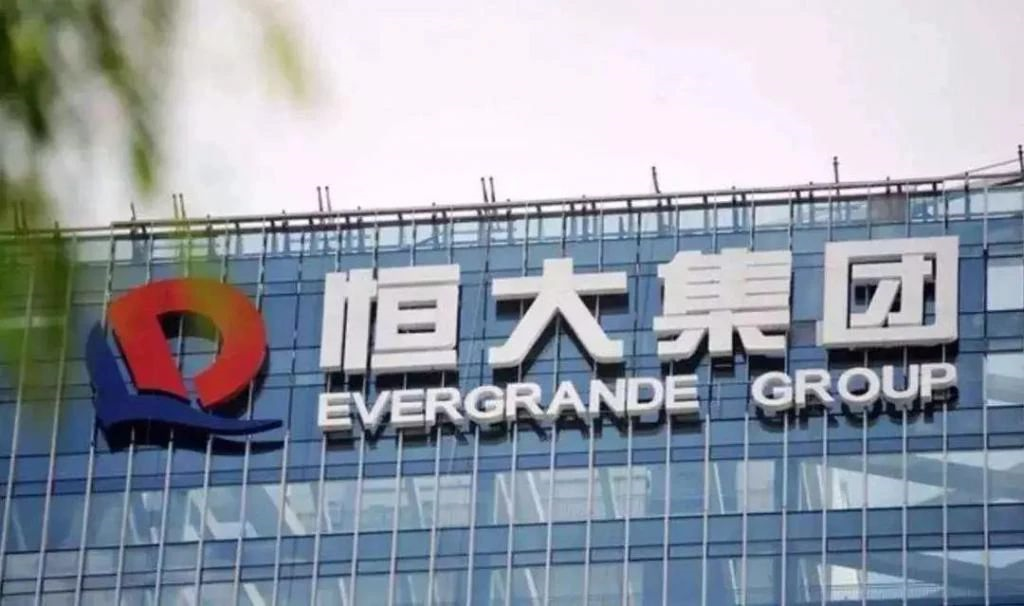
In 2013, Evergrande set the goal of achieving a sales revenue of 550 billion, a land reserve of over 300 million square meters, and solving employment for more than 2 million people by 2020. However, at that time, Evergrande’s sales revenue was only 92.3 billion, which seemed like an unattainable goal.
By 2017, Evergrande Group achieved an annual sales revenue of 501 billion, a land reserve of 312 million square meters, total assets of 1.7618 trillion, and employment solutions for more than 2.2 million people, three years ahead of schedule.
When it comes to car-making, Evergrande is obviously going to continue this approach, which is to use debt and funding to exchange for technology and time, expand its scale, quickly make and sell cars.
According to Evergrande’s official data, as of the end of 2020, the company has cumulatively invested 47.4 billion yuan in the new energy automobile industry. Among them, 24.9 billion yuan is used for the acquisition of core technology and research and development expenses, and 22.5 billion yuan is used for areas such as factory construction, equipment procurement, and procurement of parts and components.
Where does the money come from and how are the cars made?
“No 20 billion, no car.” This is a famous saying from William Li, CEO of Nio, which makes people understand that making cars is very expensive. However, the money mentioned by these tycoons is not actual cash, but rather financing capabilities. More simply put, it is the ability to finance, borrow money, and incur debt.
As mentioned earlier, the “three highs and one low” strategy suggests that financing may be Evergrande’s most proficient area, apart from selling houses.
In July 2020, Hong Kong-listed company Evergrande Health, a subsidiary of Evergrande, was officially renamed “China Evergrande New Energy Vehicle Group”. Evergrande Auto successfully listed under this name before producing any cars, in stark contrast to WmAuto and other emerging automakers that are still struggling to seek a listing on the Science and Technology Innovation Board.
In the past year, Evergrande Auto’s market value has continued to rise and remained around HKD 600 billion for several months, showing the highest increase among Chinese new energy vehicle companies. Xinhua News Agency once questioned the hidden worries of “false advertising” and “overhype” in the new energy vehicle industry and criticized Evergrande Auto for becoming the highest-valued car company in China without mass production.

The shareholders who subscribed for the stock fully reflect the strong network of friends of Xu Jiayin. After Xu Jiayin did some pitching at Jack Ma’s banquet, Evergrande Auto received investments from internet-based capital such as Yunfeng Fund, Tencent Holdings, and Didi Chuxing. Additionally, several tens of billions of Hong Kong dollars from real estate magnates and Hong Kong tycoons have also become stakes in Evergrande Auto.Contrasting with the hot trend in the capital markets is Evergrande Auto’s financial report. According to their 2020 report, revenue from the new energy vehicle business was only 188 million, making up a mere 1.21% of the total revenue. The remaining nearly 99% of revenue came from the original health management business.

Despite not having sold a single car, Evergrande Auto once ranked first in market value among Chinese auto companies, which contributed to the outside skepticism of its business of vehicle manufacturing. So how will Evergrande build its cars and what will they look like?
The main themes of Evergrande Auto’s car manufacturing are scale and speed. Thus, Evergrande Auto is not content with releasing one new car each year like other new forces; it wants to create a whole “Hengchi” car system as soon as possible.
As early as 2019, Evergrande Auto signed contracts with five of the world’s top automotive engineering and technology enterprises for synchronous R&D of 15 new cars, and invited 15 world-renowned auto designers to work on product design.
Afterwards, Evergrande Auto gradually publicized the progress of the mass production of their car models, with the main contents including:
Announcing their new energy vehicle brand “Hengchi”, with the logo meaning “protecting the blue sky, winning in the Red Sea, the Oriental Lion, and dominating globally.”
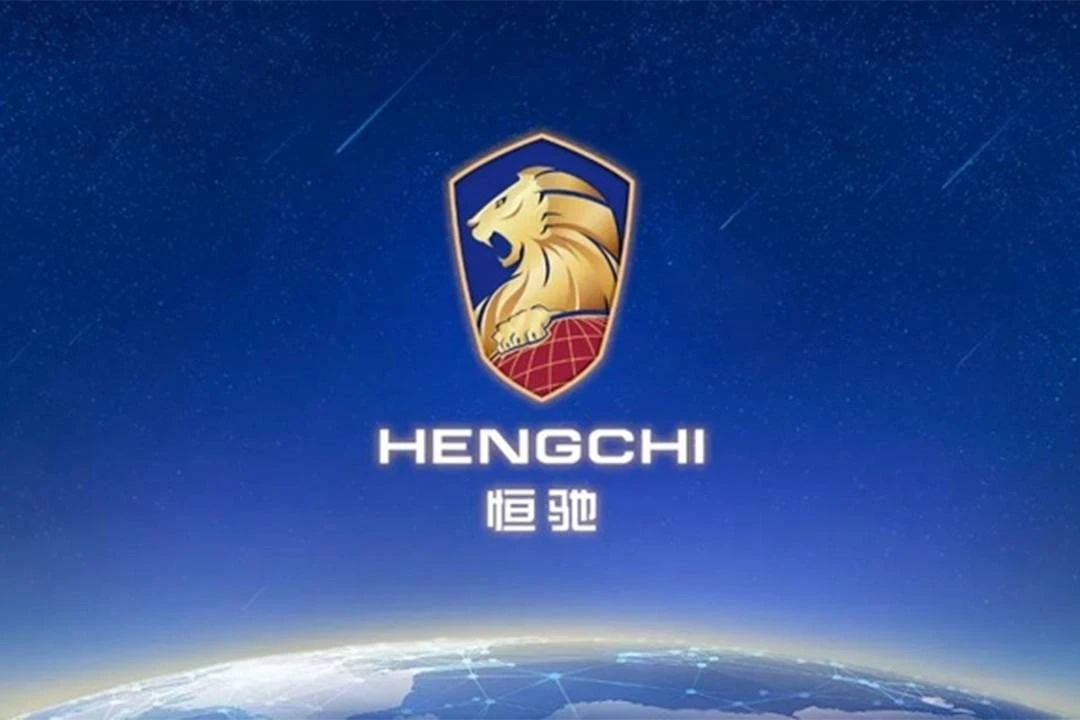
Announcing the plans for nine Hengchi models, ranging from less than RMB 200,000 to over RMB 500,000, covering A-level to D-level sedans, SUVs, and even MPVs, on par with all mainstream luxury cars on the market.

Releasing photos of winter road tests for the mass-produced models, with Xu Jiayin personally attending the test.
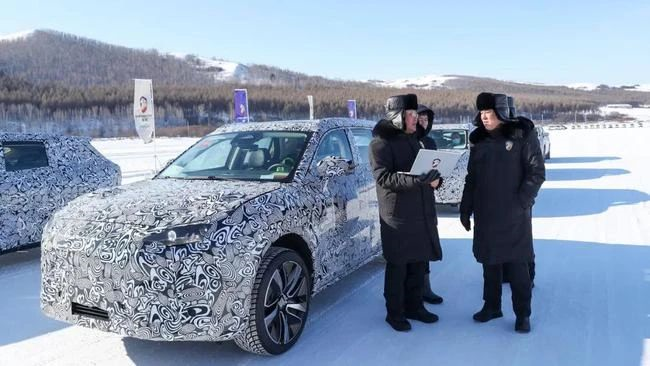
Releasing the appearance, interior, and “road test” video of their first model to go on sale, the Hengchi 1.

Renting one of the largest exhibition areas at this year’s Shanghai Auto Show, where nine models from the Hengchi family were presented simultaneously.
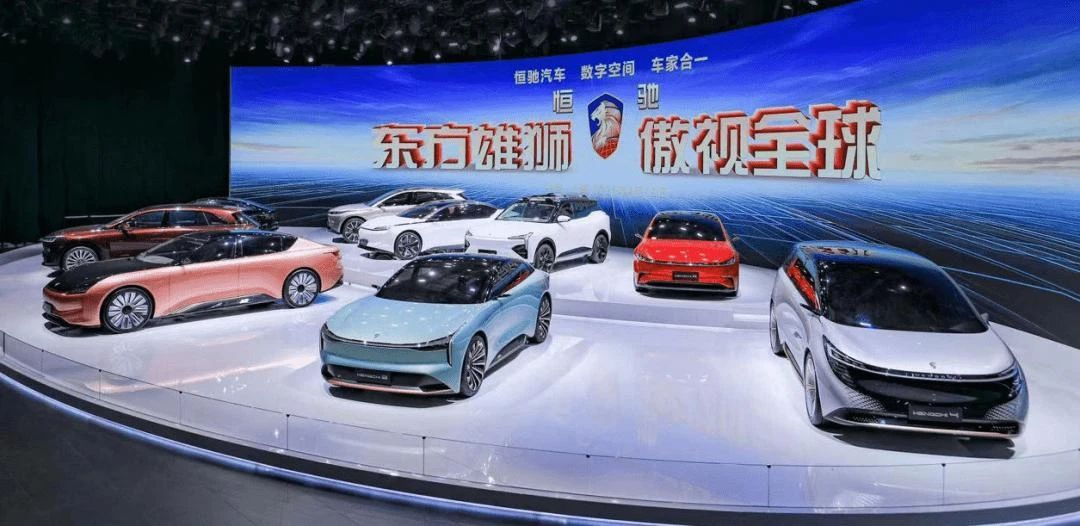
Organizing tours of the Shanghai production base, inviting thousands of media outlets to test-drive the Hengchi 5 and visit the production workshop.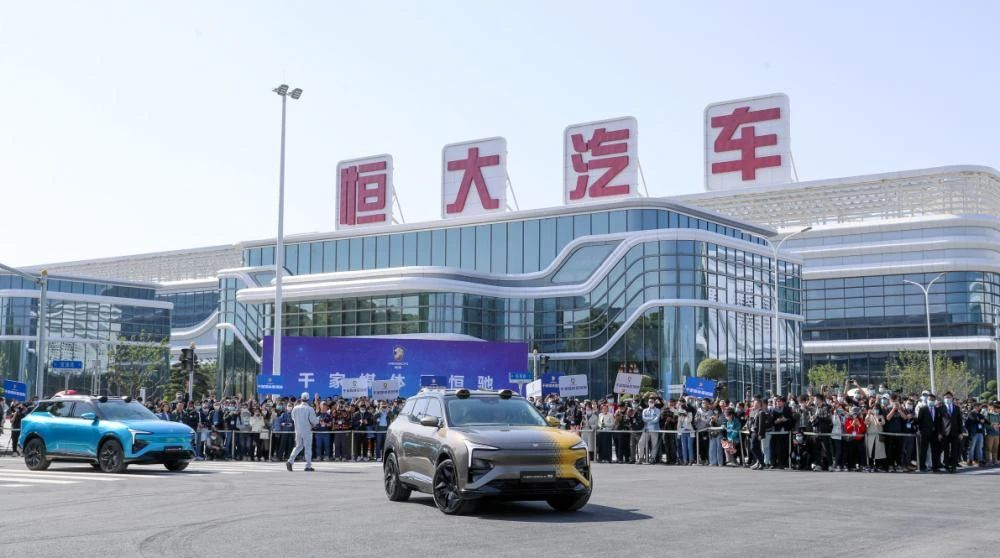
For the small target of mass delivery and the big expectation of future development, Xu Jiayin stated that Evergrande’s first mass-produced car will go into trial production in Q4 2021 and will be delivered next year. By 2025, the annual production and sales will exceed 1 million vehicles, and by 2035, it will expand to 5 million vehicles.
For comparison, the total retail sales of new energy passenger vehicles in China last year were 1.109 million, and the total retail sales from January to July this year were 1.229 million.
It is worth mentioning that the new forces in the car-making industry that have expressed optimistic future expectations, like Evergrande Auto, include Ideal Motors. The latter has predicted that the scale of China’s smart electric vehicle market will reach 8 million in 2025 and has set an equally ambitious goal for 2025: to obtain a market share of over 20% and achieve annual sales of 1.6 million vehicles.

The real estate-inspired promotion has brought huge traffic to Evergrande Auto, but it has also attracted numerous doubts. Exactly opposite to the grand narrative of Evergrande Auto, these criticisms focus on the details and question the foundation of the entire enterprise.
At Evergrande Auto’s most mature Tianjin plant, which is already in operation, many media have described it as “huge and vacant for a long time.”
This factory was originally owned by Guoneng Automobile and was acquired by Evergrande in 2019. The production line of this factory can produce the old Guoneng NEV 93 model. As for its product competitiveness, just look at the picture, and anyone can tell that it is an outdated product of gasoline to electricity conversion.

In addition, some media have revealed that due to the arrears of the testing fees of CADC’s Automotive Inspection Center (Tianjin) Co. Ltd. and other suppliers, the deposit of only 3.75 million yuan in the account of Evergrande New Energy Automobile (Tianjin) Limited was frozen by the court in May 2020.
Evergrande Auto’s grand Shanghai factory started its production line at the end of April, welcoming the “thousands of media to see Evergrande” event. However, the product on the assembly line was the white body of the Guoneng NEV 93. According to Evergrande Auto’s subsequent explanation, the product was used to tune the production line and practice for future production.
 ### Translation in English:
### Translation in English:
As for other models of Evergrande Motors, there were also many accidental errors. At the end of last year, when the new car pictures of Evergrande 1 were first released to the public, sharp-eyed media noticed that the tires of the new car were actually installed upside down.
During the Shanghai Auto Show this year, all nine models of Evergrande were unveiled. However, netizens found that the exhibited vehicles didn’t have suspensions or chassis, but were just pure models.
Apart from the many concerns regarding vehicle models, Evergrande Motors has also been fraught with negativity in terms of its corporate operations, particularly surrounding its traditional areas of expertise — real estate and land.
The first concern is the rumor of Evergrande selling properties to all employees in order to build cars.
Evergrande has a tradition of corporate-wide sales. Last year, due to the impact of the COVID-19 pandemic, the progress of the car’s R&D was delayed, while the pressure of the group’s other businesses was also passed on to the car’s R&D department.
According to relevant media reports, during China’s National Day holidays last year, the task of the more-than-3,000 employees of Evergrande Motors was to sell 300 houses. The production department had an average of 8 people per unit, and the R&D department had an average of 26 people per unit. Those who failed to complete the task of selling the properties were facing monetary fines and internal disciplinary action.
In addition to selling properties, Evergrande’s employees have also faced extra pressure to sell the group’s financial products, with the minimum purchase being ¥50,000. Approximately 15-person teams get about ¥14 million in sales targets.
Although later, some Evergrande employees clarified that the sales pressure shared by the company only applied to the leaders and did not involve lower-level employees. Moreover, this task was eventually canceled out of concern about staff turnover.
However, this issue of involving the car’s R&D personnel in property sales still cast doubt on whether Evergrande really intends to build cars.
The second concern is about whether Evergrande is using the name of car making to pursue land acquisition.
According to relevant statistics, Evergrande Motors, which has not yet produced a single mass-produced car, already has more than 30 subsidiaries that can develop real estate.
These companies have acquired land all over China, including industrial-use land that can be used to build factories, residential-use land that can be developed into new communities, and comprehensive-use land that can be used to develop commercial properties, office buildings, schools, or mixed-use buildings. In 2019 alone, the total land area acquired by Evergrande’s auto division and its subsidiaries reached approximately 7 million square meters.Analysts have pointed out that, under the national policy of encouraging the development of new energy vehicles, local governments have introduced many relevant preferential policies to encourage the development of the new energy industry. Evergrande has created employment opportunities and paid taxes during the car manufacturing process while also meeting local development needs, giving it an advantage in negotiations and allowing it to obtain land at a lower cost.
Regarding the ultimate use of this land, whether it is for building factories or developing real estate, there is obviously a lot of flexibility. Evergrande Group President Xia Haijun once stated that Evergrande borrowed land for car-making projects in various places to cover the losses caused by factory construction investments. In the future, it will also launch “buy an apartment and get a car” plans to drive real estate sales.
Therefore, the more Evergrande promotes its car-making business, the more doubts arise from the public. To dispel these doubts, the only way for Evergrande to go is to accelerate Hengchi’s production and delivery.
In fact, despite its appearance of being financially robust, Evergrande’s financial situation is not optimistic, and the phrase “to pile up debt like a mountain” is an appropriate descriptor. According to Evergrande’s 2020 financial report, the group borrowed 716.5 billion yuan that year, including a loan of 335.5 billion yuan maturing within one year. However, the total amount of cash, cash equivalents, and restricted cash on hand was only 180.74 billion yuan, which puts immense pressure on the company’s capital chain.
Similarly, last year, the Chinese government introduced the “three red lines” policy for real estate financing, which includes the following criteria:
1) A debt-to-asset ratio (excluding advance receipts) greater than 70%;
2) A net debt ratio greater than 100%;
3) A cash-to-short-term debt ratio of less than 1.
For real estate companies, if all three items do not meet the standard, they fall into the “red category,” and interest-bearing debt cannot be increased; if two are not met, they are classified as “orange,” and the annual growth rate of interest-bearing debt cannot exceed 5%; if one item is not met, they are categorized as “yellow,” and the annual growth rate of interest-bearing debt cannot exceed 10%. If all three criteria are met, then the company is designated as “green,” and the annual growth rate of interest-bearing debt cannot exceed 15%.
From Evergrande’s 2020 annual report, it is evident that it failed to meet all three of the “three red lines” when excluding advance receipts, which resulted in external financing channels being constrained. Debt repayment can only rely on sales and selling assets.In simpler terms, for Evergrande, the old trick of borrowing to repay debts no longer works.
Therefore, behind the grand promotion of the nine new electric vehicle models of the Evergrande Hengchi brand in the first half of this year, the more tricky issue facing the Evergrande Group is the handling of its debts, and the achievement of “turning green”.
As of June 30th, Evergrande Group’s interest-bearing debts had dropped to over RMB 570 billion, and its net debt ratio had fallen below 100%, achieving a major milestone in debt reduction. However, the debt still amounts to over RMB 500 billion, which is still a huge amount.
Therefore, the scene of Evergrande considering selling partial equity in its automotive and property business appeared at the beginning of this article. The plan to sell major industries further illustrates the heavy pressure of Evergrande’s capital.
On the other hand, by selling assets, the pressure on enterprise funds can be alleviated, which helps ease the mentality of debt holders. The reaction in the capital market is several listed companies’ stock prices rise.
However, for potential investors, Evergrande Properties is a more valuable investment target, while the Evergrande Automotive, which is still at the stage of large-scale investment but has not yet produced a mass-produced car, is not attractive enough.
It was announced that in 2020, Evergrande Automotive suffered a loss of RMB 7.7 billion. It is expected to lose RMB 4.8 billion in the first half of 2021. At the end of 2020, the net cash flow generated from Evergrande Automotive’s operating activities was negative RMB 1.96 billion.
Aside from the losses, Evergrande Automotive is also in a debt-laden situation.
At the end of 2020, the company had total liabilities of RMB 155.9 billion, total assets of RMB 150.1 billion, and, after deducting RMB 200 million of minority shareholders’ equity, the equity attributable to the parent company’s shareholders was negative RMB 6.1 billion.
In addition, Evergrande Automotive is building factories in various places. In 2020, the depreciation of fixed assets was RMB 500 million, and it is unable to generate real production and sales in the short term.
Evergrande Automotive’s R&D expenses were included in intangible assets. In 2020, its intangible assets had accumulated to RMB 10.2 billion, which will be gradually transferred into intangible asset amortization, becoming an annual operating cost. Amortization of intangible assets in 2020 was RMB 400 million.
That is, Evergrande Automotive’s total fixed annual expenses are at least RMB 4.6 billion, and it remains a mystery as to which investor will continue to fund it.
Evergrande’s car-making journey with no turning back
At this point, it is not difficult to see that Evergrande’s car-making journey cannot be simply described as “”making cars with PPT””, but rather a grand drama of a capital giant breaking into the new energy track with tangled capital webs that cannot be easily untangled.
If you said that Evergrande Automotive is just a shell, a scam, the involvement of countless capital, suppliers, towering Evergrande factories, and numerous R&D personnel, would it not prove that a real estate tycoon can blind the entire world in the automotive industry with their money?If we were to say that Evergrande is really making cars, then the unconventional new car plan and the constantly circulated negative news always makes people feel unreliable.

Going back, if Evergrande initially chose BAIC’s “JiHu Mode”, and bound it with a third-party manufacturing company like Magna to make a car model, then what would be the result?
If we need to blame anyone, we can only blame the thinking inertia of Evergrande’s boss “either don’t do it, or do it the biggest and strongest”, which uses a barbaric attitude to break people’s understanding and imagination of the car-making rules.
Interestingly, it was also Xu Jiayin who said in 2018: “The era of Evergrande pursuing scale alone is over. For the future of Evergrande, the importance of profit is higher than that of scale. We want to change the idea of Evergrande’s scale first, and then the letter ‘heng'”
However, this statement is obviously not applicable in the context of Evergrande’s car-making. In the end, perhaps it is not that important what shape the Hengchi 1, which is planned to be launched and delivered next year, will be made into.
This article is a translation by ChatGPT of a Chinese report from 42HOW. If you have any questions about it, please email bd@42how.com.
